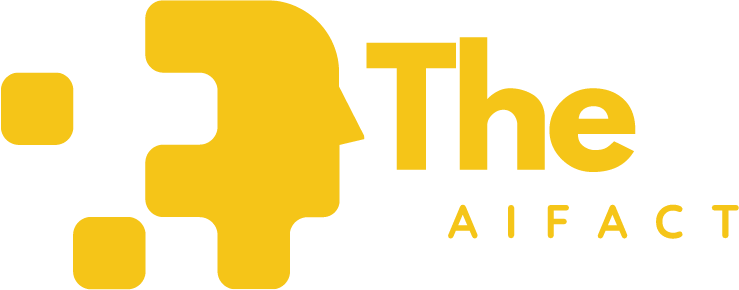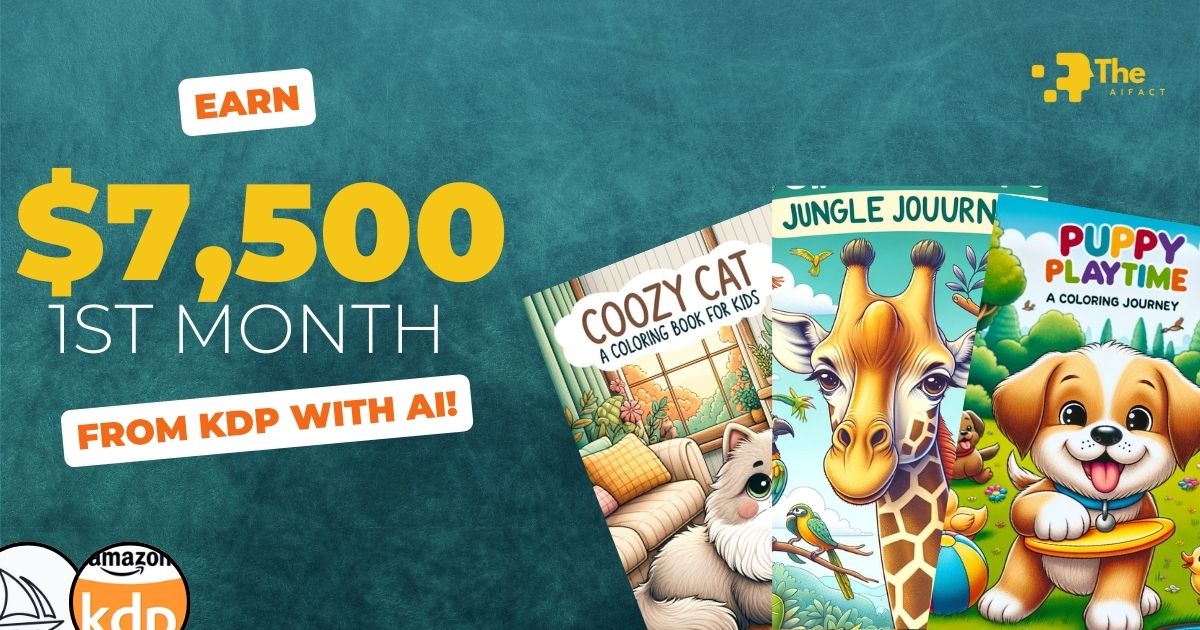Imagine earning over $11,000 a day just one month after publishing a book. Sounds like a dream, right? But it’s a reality for some Amazon Kindle Direct Publishing (KDP) authors.
Take another case: a book raking in an estimated $299,000 within two months. These success stories are not just outliers; they represent the potential of Amazon KDP.
So, what exactly is Amazon KDP? Its platform empowers you to self-publish eBooks and paperbacks for free and sell them on Amazon. The beauty of KDP lies in its simplicity and accessibility.
You write Amazon sells – handling everything from printing to shipping. And the best part? You earn royalties for every sale. Worry not if you’re overwhelmed or unsure how to get started. I’m here to turn you from a newbie into a savvy self-publisher.
We’ll journey together through each step – from brainstorming winning ideas to creating your masterpiece. Let’s dive into the world of Amazon KDP with AI and unlock the secrets to making your book a bestseller.
Read more:
Understanding Amazon KDP
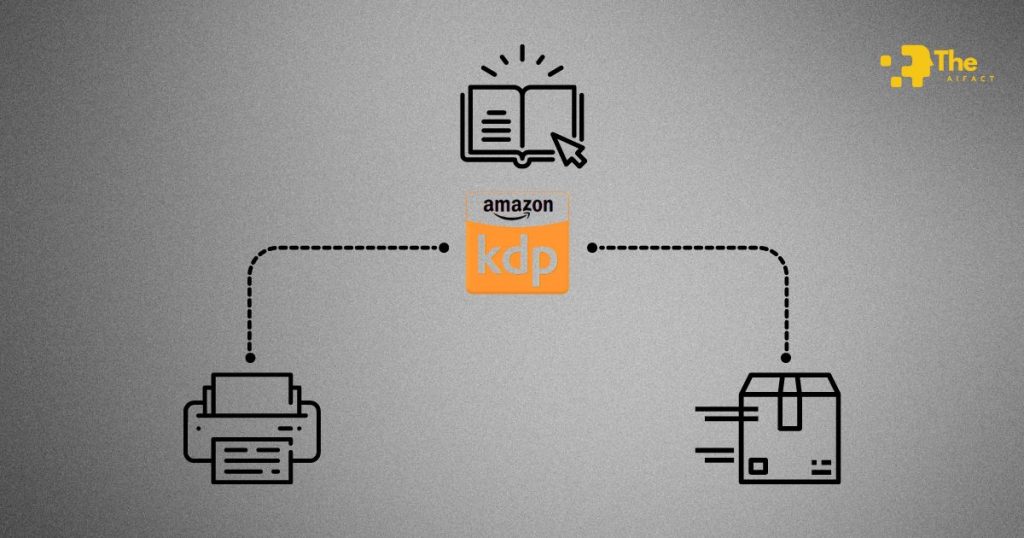
Amazon Kindle Direct Publishing (KDP) is more than just a publishing platform; it’s a gateway to your dreams as an author. It’s like having a personal publishing house at your fingertips for beginners without the usual headaches and expenses.
KDP is a free service that lets authors publish their books with zero upfront costs. Your book appears on Amazon within days and reaches millions of readers worldwide. Plus, you can control your rights and set your list prices.
But what kind of books can you publish with KDP? Let’s explore the three main categories:
- Low-Content Books: These include planners, journals, or logbooks. They’re typically easy to create and require minimal written content. However, simplicity comes with challenges, namely high competition and lower profit margins. But don’t let that deter you! With the proper marketing and unique design, these can be a great entry point.
- Medium Content Books: Step up the ladder, and you will find coloring books, activity books, or simple how-to guides. These books strike a balance between content and creativity. They require more effort than low-content books but promise higher rewards and moderately competitive markets.
- High Content Books: Now, we’re talking about full-fledged guides, detailed non-fiction, and fiction works. These are the crown jewels of KDP. They demand significant content creation and are unique, making them hard to copy. This uniqueness translates to less competition and much higher profit margins.
Each category has its charm and challenges. Whether you’re a seasoned writer or a creative newbie, KDP has a space for your ideas. The key is to choose a type that aligns with your strengths and market demand.
Choosing the Right Type of Book
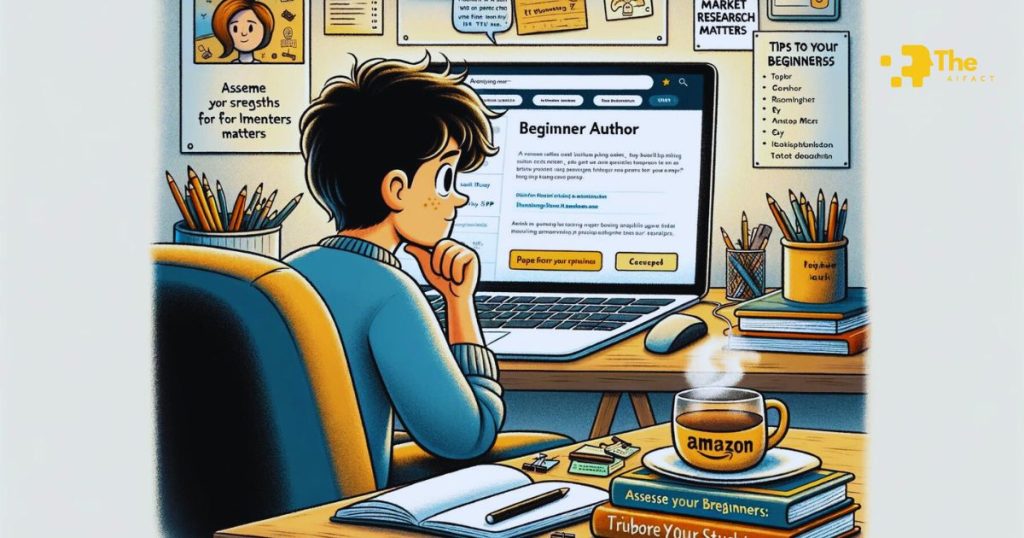
Selecting the correct type of book to publish on Amazon KDP can be a game-changer. It’s like picking the right seed to plant; the better the choice, the richer the harvest. Let’s delve deeper into each category to help you make an informed decision:
1. Low Content Books: Planners and Journals
Low-content books are the stepping stones of the Amazon KDP world. These include planners, journals, and notebooks. Their key feature? Minimal written content. They’re easy to produce, making them a popular choice for beginners.
However, there’s a catch – these books face high competition due to their simplicity. The profit margins are typically lower compared to other categories.
But don’t be disheartened! With creativity and a unique angle, you can still make your mark. It’s all about finding a niche audience and catering to their needs.
2. Medium Content Books: Coloring and Activity Books
Climbing up the complexity ladder, we have medium-content books. Think coloring books, activity books, and simple how-to guides. These require more effort than low-content books but are less demanding than high-content ones.
They strike a sweet spot with medium competition and higher profit margins. These books appeal to a diverse audience, from kids to adults seeking relaxation. The trick is offering something unique, whether quirky illustrations or engaging activities.
3. High Content Books: Guides, Fiction, and Non-Fiction
Now, for the big leagues: high-content books. These are your detailed guides, comprehensive non-fiction works, and captivating fiction. They demand a significant amount of content and creativity.
But with great effort comes great reward. High-content books usually have less competition and higher profit margins. They’re harder to replicate, offering a unique value to the readers.
This category is your playground if you have expertise in a particular field or a captivating story.
Tips for Beginners
- Assess Your Strengths: Are you a creative thinker? Do you have expertise in a specific field? Your skills and interests should guide your choice.
- Market Research: Before deciding, research the market. Look at what’s selling and see where you can add value.
- Start Small: If you’re new to KDP, consider starting with a low or medium-content book to familiarize yourself with the process.
- Be Unique: Find a way to stand out regardless of the category. It could be through your content, design, or marketing approach.
Remember, there’s no one-size-fits-all approach. Your choice should align with your passions and market opportunities. Choose wisely, and you’re already halfway to success.
Success Stories and Inspiration
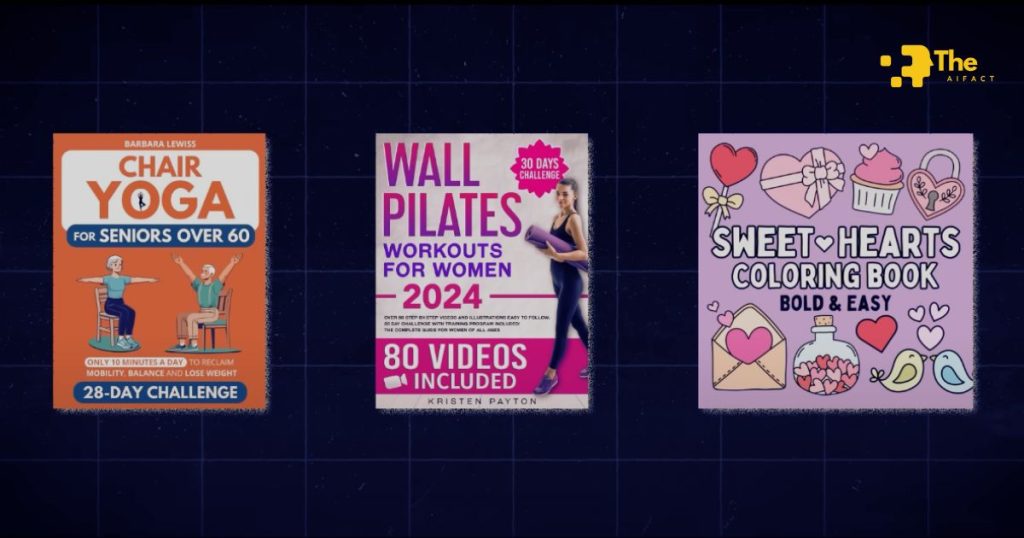
Diving into success stories can be incredibly motivating. It’s like peeking into a treasure chest of what’s possible. Here, we’ll explore a few standout books from each category on Amazon KDP, dissect their earnings, and uncover the secrets to their success.
Case Study 1: Low Content Book – “Things I Can’t Say Out Loud” Journal
- Success Snapshot: A simple lined journal, humorously titled “Things I Can’t Say Out Loud,” tapped into the market with a twist of creativity. Just three months post-launch, it earns approximately $900 monthly in royalties.
- Why It Worked: The clever title resonated with people seeking an expressive outlet. Its success lies in its relatability and the humorous spin on a regular journal.
Case Study 2: Medium Content Book – Beginner’s Coloring Book
- Success Snapshot: A coloring book designed with simple yet engaging graphics, it started making up to $500 daily in royalties within just one month of its release.
- Why It Worked: It struck a chord with adults seeking stress relief and creative expression. The balance of simplicity and aesthetic appeal made it a hit.
Case Study 3: High Content Book – Step-by-Step Workout Guide
- Success Snapshot: This detailed workout guide, featuring 80 exercises with illustrations and videos, earns an astounding $11,200 daily.
- Why It Worked: High content value, practicality, and the inclusion of multimedia elements made it stand out. It addressed a specific need with quality content, making it hard to replicate and highly sought after.
What Makes These Books Successful?
- Meeting a Specific Need: Each book addresses a specific demand or interest in the market, from humor and stress relief to fitness guidance.
- Unique Selling Point: Whether it’s a catchy title, simple yet appealing design, or comprehensive content, these books offer something special.
- Quality and Relevance: They maintain a high-quality standard in content and design, staying relevant to their target audience.
- Effective Marketing: Leveraging Amazon KDP’s platform, these authors smartly positioned their books to reach the right audience.
These case studies illustrate that success in Amazon KDP can come in many forms. It’s about finding your niche, understanding your audience, and delivering quality content that stands out. Draw inspiration from these stories, and who knows? Your book could be the next big success story.
Finding Winning Book Ideas
The journey to a successful Amazon KDP book begins with a golden idea. But how do you find that elusive, profitable book concept? Let’s break down both paid and free methods to unearth those gems.
Step 1: Embrace the Power of Research Tools
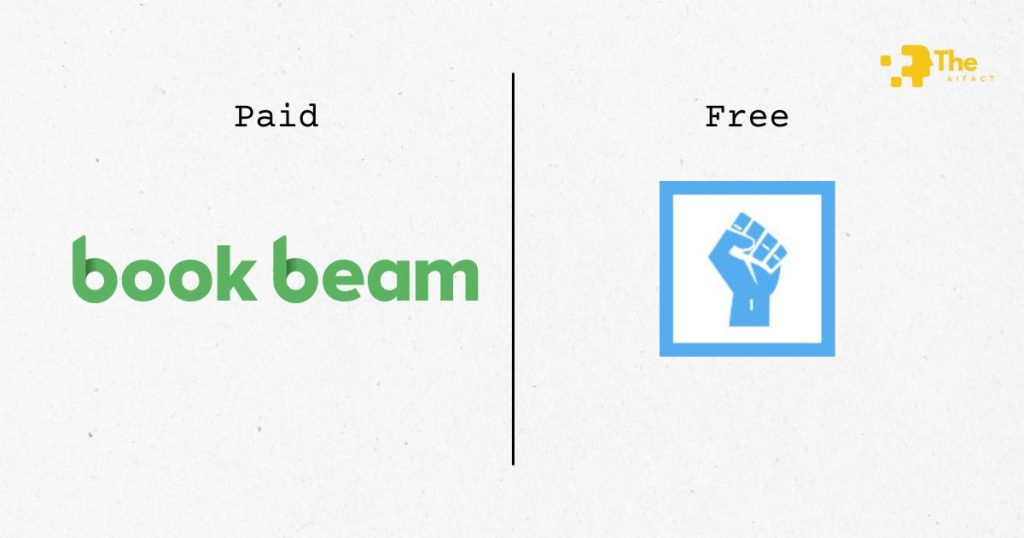
Paid Tool: Book Beam with The Niche Finder
- How it Works: Book Beam is a goldmine for KDP publishers. Its standout feature, The Niche Finder, is like a crystal ball revealing the hidden potential in various niches.
- Using The Niche Finder: You’re greeted with many filters once logged in. My favorite strategy? Pick a preset from the drop-down menu – like top-selling books or new hot sellers. Tailor your search by adjusting filters like the number of reviews to hone in on low-competition, high-potential niches.
- Analyzing Data: Next to each book, you’ll find valuable data: monthly sales, royalties, and prices. Dive into these listings on Amazon for more profound insights – what’s their secret sauce?
Free Method: DS Amazon Quick View
- How it Works: This handy Chrome extension is like having x-ray vision for Amazon’s book market. It reveals the Best Seller Rank (BSR) of products directly in your search results.
- Using BSR to Your Advantage: BSR is your compass to navigate the Amazon market. A lower BSR means higher sales. For example, a book with a BSR of 7,00 is likely a winning product.
- Practical Application: Let’s say you’re eyeing coloring books. With DS Amazon Quick View, you can instantly see the BSR under each listing, helping you gauge their success and sales volume.
Step 2: Master the Art of Amazon Searches
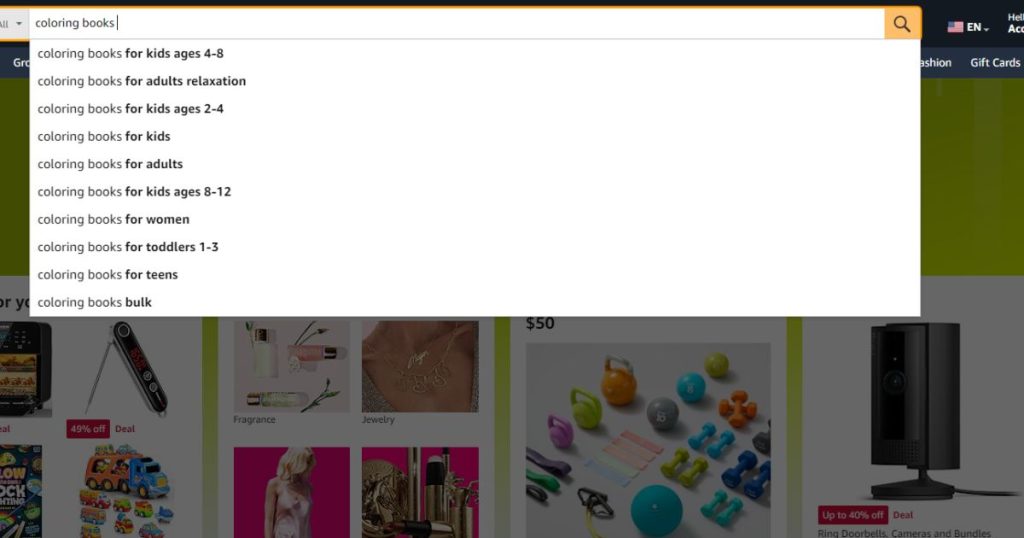
- Broad vs. Niche Searches: Start with a broad category like “coloring books,” then use the ‘space method.’ Hit the space bar after your search term to uncover more specific niches – “coloring books for adults,” “for relaxation,” etc.
- Analyzing Competition and Demand: Use the number of search results as a gauge for competition. Fewer results typically mean less competition.
- Targeting the Right BSR: Aim for products with a BSR that indicates healthy sales but isn’t so low that you’re up against giants.
Remember, finding a winning book idea isn’t just about following data. It’s about blending these insights with your unique perspective and creativity.
With these tools and strategies, you can discover ideas that resonate with readers and succeed on Amazon KDP.
Creating Your Book Content with AI Assistance
In today’s digital era, AI isn’t just a buzzword; it’s a creative partner. For KDP authors, AI tools can be a game-changer in generating content and designs. Let’s explore how to harness these tools to create captivating book content.
1. Harnessing AI for Book Content and Design
- AI for Content Generation: AI can assist in creating engaging written content, especially for high-content books. For example, you can use AI to generate outlines, chapters, or entire sections of your book, depending on the genre and complexity.
- AI for Design: Tools like MidJourney and Leonardo AI revolutionize how we approach book design. They can generate high-quality illustrations and graphics tailored to your book’s theme and style.
2. Creating a Coloring Book with AI
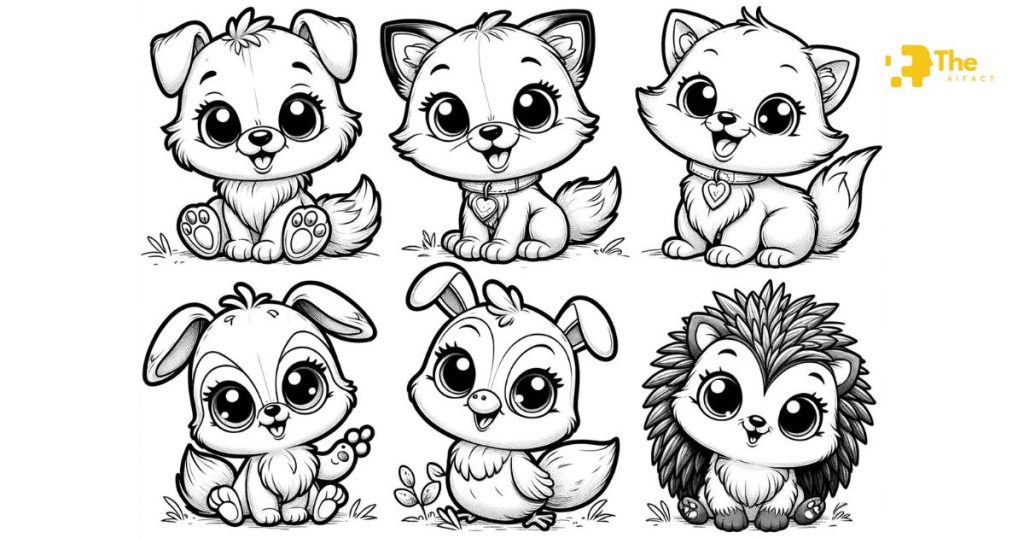
- Step 1: Define Your Theme: You’re making a coloring book. Start by defining your theme. Are you focusing on animals, landscapes, patterns, or something more niche?
- Step 2: Generate Illustrations with AI: Using a tool like MidJourney, input prompts relevant to your theme. For example, “cute animals in a whimsical style for coloring.” The AI then generates a variety of illustrations for you to choose from.
- Step 3: Refine and Select: Browse through the AI-generated illustrations. Select the ones that best fit your book’s theme and style. Sometimes, the AI might miss the mark, so be ready to refine your prompts to get the desired output.
- Step 4: Layout and Design: Once you have your illustrations, use a design tool to lay out your coloring book. This step involves placing your illustrations on pages, adding text, and ensuring each page looks balanced and inviting.
- Step 5: Quality Check and Adjustments: It’s crucial to ensure your illustrations are high-resolution and print-friendly. AI-generated designs might need adjustments for clarity and detail, ensuring they provide an enjoyable coloring experience.
3. Tips for Using AI in Book Creation
- Blend AI with Creativity: AI is a tool, not a replacement for your creative vision. Use it to enhance your ideas, not replace them.
- Quality Control: Always review and refine AI-generated content to ensure it aligns with your book’s quality standards.
- Stay Original: While AI can generate content, infuse it with your unique voice and style to stand out.
AI is like having a creative assistant who can bring your imaginative concepts to life with efficiency and a dash of magic. Embrace these tools, and watch your book transform from a mere idea into a beautiful, tangible product ready for the world to see.
Designing and Preparing Your Book for Amazon KDP with AI

Creating a visually appealing book is as crucial as its content, especially on a platform like Amazon KDP, where first impressions can make or break your success. Let’s dive into how to design striking book covers and prepare your book for publishing with a professional touch.
1. Crafting an Eye-Catching Book Cover with Canva
- Start with Canva: Canva is a user-friendly graphic design tool perfect for creating book covers. Even if you’re not a design expert, Canvas’s intuitive interface and templates make the process straightforward.
- Choosing the Right Template: Select a book cover template in Canva or start with a blank canvas. Remember, your book cover size should match Amazon KDP’s requirements. A 6″ x 9″ cover typically works well for most books.
- Designing Your Cover:
- Title and Author Name: Ensure your book’s title and author name are prominent and easily read. The font and color complement the overall design.
- Visual Elements: Use high-quality images, illustrations, or graphics relevant to your book’s content. Canva offers a vast library of stock images, or you can upload your own.
- Back Cover and Spine (for paperbacks): Don’t forget these areas. Include a compelling book description, your author bio, and any critical reviews or endorsements.
2. Interior Design and Layout
- Formatting Your Manuscript: The interior of your book should be professionally formatted. This includes margins, headers, footers, page numbers, and chapter headings. Tools like Microsoft Word or Google Docs can be used for basic formatting.
- Consistency is Key: Maintain a consistent style throughout the book. This includes font choices, heading styles, and spacing.
- Adding Special Elements: Consider adding images, charts, or graphics if they enhance your book. Ensure they are high-resolution and correctly aligned.
3. Perfecting Your Book Format with Canva and Amazon’s Guidelines
- Using Amazon’s Guidelines: Amazon provides detailed guidelines and templates for book formatting. These are crucial for ensuring your book meets the platform’s standards.
- Canva for Interior Pages: Canva can also be used for designing interior pages, especially for books that require more graphical elements, like children’s books or cookbooks.
- Uploading to KDP: Once your cover and interior are ready, upload them to KDP. Pay close attention to the file formats and specifications Amazon requires.
4. Final Checks Before Publishing
- Preview Your Book: Use KDP’s built-in previewer tool to see how your book will look in print and on Kindle devices. Make sure to check every page.
- Proofreading: Ensure there are no typos or formatting errors. Having a second pair of eyes review your book might be worthwhile.
- Cover Quality Check: Ensure the cover is not pixelated or stretched. The spine and back cover should align perfectly.
Designing and preparing your book for Amazon KDP might seem daunting, but with the right tools and patience, you can create a product that looks professional and stands out in the crowded world of self-publishing.
The Publishing Process on Amazon KDP
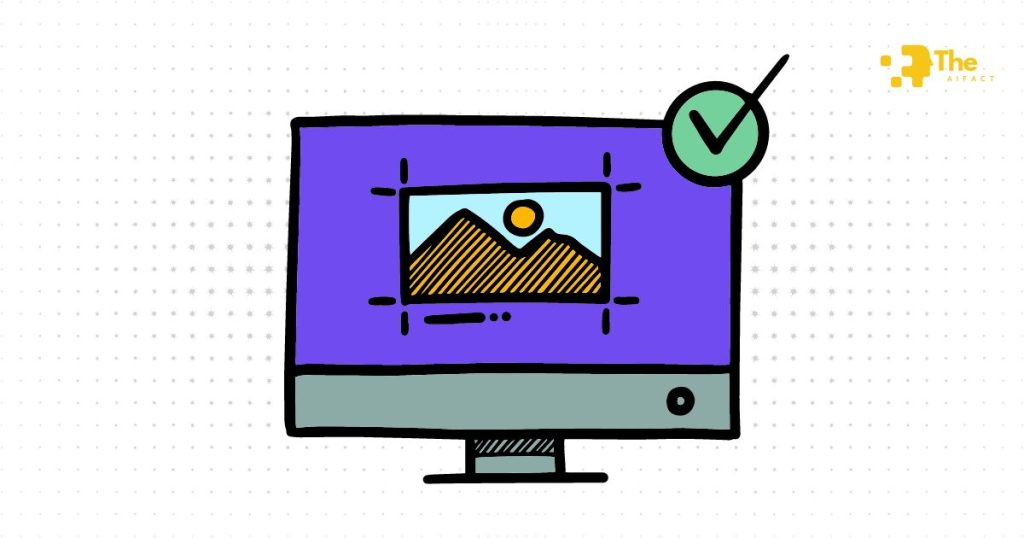
Publishing on Amazon KDP can be thrilling, marking the transition from writer to published author. Here’s a step-by-step guide to navigating this process smoothly and effectively.
1. Step-by-Step Guide to Publishing on Amazon KDP
- Sign Up for KDP: First, create your account on KDP. You can use the same credentials if you already have an Amazon account.
- Start Your Book Project: In your KDP dashboard, choose ‘+ Kindle eBook’ or ‘+ Paperback’ depending on your book format.
- Enter Book Details:
- Title and Subtitle: Input your book’s title and subtitle. Ensure they’re catchy and relevant.
- Description: Write a compelling description. This is your sales pitch to potential readers, so make it engaging!
- Keywords: Select keywords that will help readers find your book. Think like your audience; what search terms would they use?
- Categories: Choose categories that best fit your book. Accurate categorization helps in reaching the right audience.
- ISBN: If you have your own ISBN, use it. Otherwise, KDP can provide one for free.
- Upload Your Manuscript and Cover: Upload your manuscript and cover files. Make sure they meet KDP’s formatting guidelines.
- Preview Your Book: Use KDP’s previewer tool to check how your book will look once printed or displayed on a Kindle.
- Set Your Territories: Choose the territories where you hold distribution rights.
- Pricing and Royalties:
- Choose a Royalty Plan: KDP offers 35% and 70% royalty options. The 70% option is generally preferable but comes with certain conditions.
- Set Your List Price: Consider your book’s length, genre, and audience when setting the price. Look at similar books in your category for guidance.
- Royalties: Understand how your royalties will be calculated based on the list price and your chosen royalty option.
3. Tips for a Successful KDP Launch
- Optimize Your Book Details: Your book’s title, description, and keywords are crucial to its discoverability. Spend time crafting these carefully.
- Quality Control: Before hitting ‘Publish,’ ensure your book is free of typos and formatting issues. A well-presented book builds credibility and encourages positive reviews.
- Understand Amazon’s Algorithms: Familiarize yourself with how Amazon’s search and recommendation algorithms work. This can significantly impact your book’s visibility.
- Market Your Book: Don’t rely solely on Amazon for marketing. Promote your book through social media, websites, email newsletters, and other channels.
3. Post-Publishing Considerations
- Track Your Book’s Performance: Keep an eye on your sales dashboard. Analyze what’s working and where you need to make adjustments.
- Gather Reviews: Encourage readers to leave reviews. Positive reviews can boost your book’s visibility and credibility.
- Keep Updating: Based on feedback and sales performance, you might want to update your book’s cover, description, or keywords.
Publishing on Amazon KDP is an incredible opportunity to showcase your work to a global audience. You can set your book up for success with careful planning, attention to detail, and marketing savvy. Remember, self-publishing constantly evolves, so stay adaptable, keep learning, and keep writing.
Final Thoughts
Embarking on your self-publishing journey with Amazon KDP is like setting sail on a vast ocean of opportunities. You’ve got the map. Now, it’s time to navigate the waters. Let’s quickly recap the key steps to ensure your voyage to success is smooth and fruitful.
Critical Steps to Success in Amazon KDP:
- Choose the Right Book Type: Whether it’s low, medium, or high content, select a category that matches your strengths and market demand.
- Find Your Winning Idea: Utilize tools like Book Beam or the DS Amazon Quick View extension to unearth those hidden gems that could become bestsellers.
- Create Quality Content: Whether you’re crafting it yourself or using AI tools for assistance, the content of your book is the cornerstone of your success.
- Design That Stands Out: A compelling cover and a well-formatted interior are crucial. Tools like Canva can be invaluable in this process.
- Master the KDP Publishing Process: From filling in the book details to selecting the correct categories and keywords, each step is a building block to your book’s success.
- Set the Right Price: Understand your royalties and set a price that balances affordability for readers with fair compensation for your efforts.
- Promote and Adapt: Post-publishing, engage in active marketing, and be ready to adapt based on feedback and sales performance.
Now is the time to turn your writing dreams into reality. Each step on Amazon KDP brings you closer to sharing your story with the world. Remember, every successful author starts with a single step, a first page, a bold dream. Your story deserves to be told, and there’s an audience waiting to hear it.
